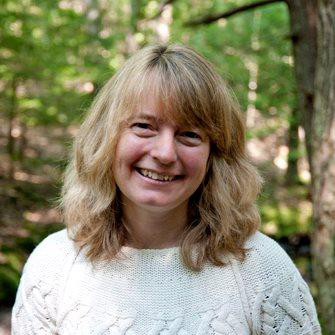Kristen Lindquist: Orchids —They're not just in the tropics
When you think of orchids, exotic flowers growing in vine-draped tropical jungles might come to mind. Or perhaps those striped and colorful flowers staked upright in little pots in the grocery store floral section. Or maybe you think of Susan Orleans' best-selling book-then-movie, The Orchid Thief, which featured crazed collectors in steamy swamps of the Deep South. But are there really orchids up here in the Maine woods?
While tropical climes do boast many thousands of the world's 28,000-plus orchid species, they're distributed all over the world. Being one of the more ancient of the flowering plant species, orchids have had millions of years to specialize. Most orchid leaves are rather simple, nothing special, but the flowers themselves are often quite dramatic-looking. Beyond all the crazy colors and patterns, the one thing most orchid flowers have in common is a petal forming a lower labellum or "lip" designed to attract and lure in pollinators.
Orchids are represented in New England by more than 20 genera. Here in Maine we have our fair share, although our colder climate ensures that all our species are terrestrial varieties, growing in soil. (Some warmer climate species are epiphytes, "air plants," using other plants for support and drawing moisture and nutrients from the air.)
Of the species found in Maine, the lady's-slippers are probably the most familiar and showy. Maine hosts four species of lady's slipper, although the two most striking are quite rare: the aptly named Showy Lady's-slipper and the Ram's Head Lady-slipper.
The Pink Lady's-slipper, or Moccasin Flower, is the most common and best-known orchid found in the Maine woods. The veined, cleft pouch (the labellum) of this slipper-shaped flower, topped with brown sepals that look sort of like laces, grows one to a stem. Color ranges from deep rose pink to ghostly white, although the white form is less abundant than the shades of pink. The plants often grow in clumps and can be found in varying numbers each June, flowering in sunny edges throughout Camden Hills State Park and other areas of mixed deciduous and pine forest. They can also be readily seen in late spring and early summer throughout the grounds of the Coastal Maine Botanical Gardens in Boothbay, which has been conducting a study of wild Moccasin Flowers for many years.
As a child I was always told not to pick lady's-slippers, that it was against the law. While the species is neither endangered nor legally protected in any way in Maine—no plants are—this was good advice nonetheless. Because the lady's-slipper possesses a single flower on its one stem, if that flower is picked, the plant will not reproduce or come back next spring.
Trying to plant this wildflower in your own yard is a bad idea, as well. Because it's particularly sensitive to soil acidity and light exposure, a wild orchid can take many years to grow from seed to mature, flowering plant. The lady's-slipper's tuberous root system is also not fully understood, and the plant shares a complex symbiotic relationship with a certain fungus that provides nutrients for developing seeds. Transplants thus have an extremely low success rate and rarely thrive.
Without making a special effort, I have encountered several other orchid species in Maine besides lady's-slippers, though I've only scratched the surface of the 48 or so species that may be found in the state.
On the edge of a certain swampy island meadow I have once or twice come across Rose Pogonia, more colorfully known as Snake-mouth. While I don't think it looks particularly "snaky," the fringed labellum of this little pink orchid is adorned with fuzzy yellow hairs that are perfect for transferring pollen from the legs of visiting bees.
While chasing a particular butterfly species in Down East sphagnum bogs, I discovered and fell in love with the Grass-pink. Several winged blossoms of up to a couple inches in size adorn each slender, swaying stem that rises here and there out of the spongy carpets of wet moss. Its yellow labellum, unusual for being found at the top of the pink flower, sags under the weight of a pollinator and effectively traps it inside the flower. The insect, then, can't help but pick up lots of pollen in the process of working its way out. This orchid's delicate beauty seems out of place in the stunted, acidic landscape. I have spent many hours under the spell of this fairy flower of the bog, trying to capture its essence in photographs and marveling at its structural complexity.
While assisting with a plant survey on the lower slopes of Ragged Mountain in Camden, I once came across the robust Large Purple Fringed Orchid. This taller plant (it may reach up to four or five feet in height) sports many fringed purple-pink flowers at the top of its stem.
At the other end of the size spectrum is the Calypso Orchid or Fairy-slipper, a flower I've not yet seen but really hope to come across someday. This stunning but tiny orchid, only four to eight inches tall with a flower about the size of a thumbtip, prefers an increasingly scarce habitat: dense, mossy, coniferous woods. The Maine Orchid Society recommends traveling to Aroostook County to look for this flower, which shows off a yellow lip spotted with purple and tipped with two little "horns," striated with brown, and crowned with mauve sepals and side petals that jut extravagantly upward like a fancy Kentucky Derby hat.
There's something enchanting about orchids; seeking out Maine's many diverse species can become a obsessive passion for those who have fallen under their spell. From the familiar and beloved Moccasin Flower to the globally rare Ram's Head Lady's-slipper, these floral gems bring a touch of the exotic tropics to the Maine landscape. Perhaps in this cool, northern climate that is part of the secret of their allure.
hr />
 Kristen Lindquist is an amateur naturalist and published poet who lives in her hometown of Camden.
Kristen Lindquist is an amateur naturalist and published poet who lives in her hometown of Camden.
• Meditations on an unlikely harbinger of spring
• Meditations on the Snow Goose
• Sky-watching during the holiday season
• Understanding the Aurora Borealis
• Get to know the constellation Gemini
• Celebrate September’s full moon
• Northern Sky basics with the Big Dipper
• Early Christmas morning: Look up! A full moon, and Orion bright in the sky
Event Date
Address
United States
































